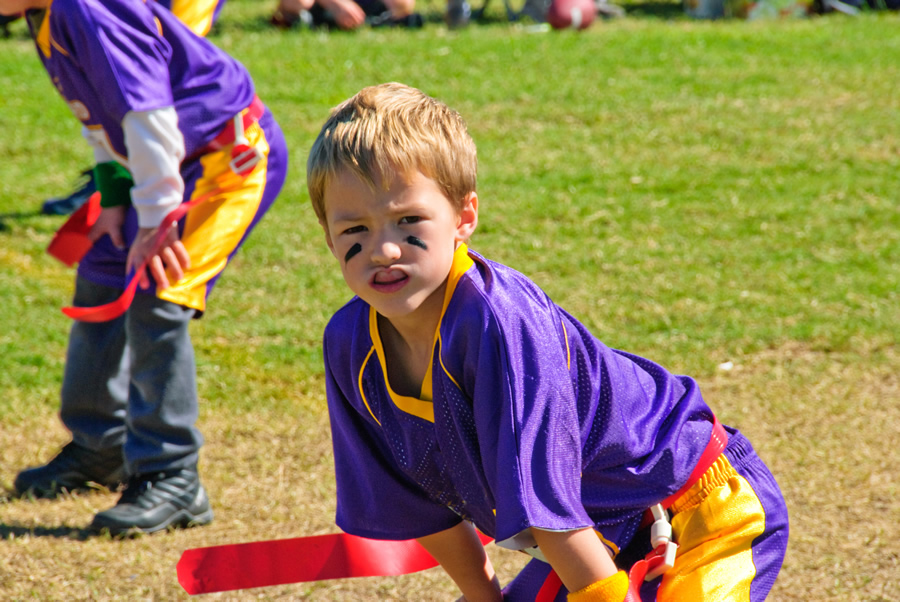Protect Your Kids Smile with a Mouthguard
Posted on August 21, 2018 in Dental Health

Some of our favorite grade school pictures of our children might be those early elementary years where they start losing their baby teeth. It’s a rite of passage that marks a transitional time where they are starting to mature and get their adult teeth. But imagine a few years later and those teeth are missing due to another reason – a misjudged line drive at your shortstop, an errant soccer ball catches your midfielder in the cheek or an elbow to the mouth causes damage to your point guard’s smile.
As parents, we make sure our kids have the standard safety equipment they need for sports, but in many sports, mouthguards are not required. As kids of all ages are heading back to school and participating in fall sports, parents should consider these factors when deciding whether or not to invest in a mouthguard:
- 600,000 sports-related emergency room visits per year are due to dental injuries – that’s 1,643 per day – across the United States.[1]
- The Academy of General Dentistry estimates that mouthguards (when fitted and worn properly) prevent more than 200,000 injuries per year or 547 per day.
- An athlete is 60 times more likely to suffer harm to the teeth when not wearing a mouthguard.[2]
- The lifetime cost of teeth knocked out can range from $10,000 to $20,000 per tooth.[3]
“Orofacial injuries (mouth, eye, face) are very painful, but many are preventable,” said Dr. Jeff Chaffin, vice president and dental director for Delta Dental of Iowa. “While young athletes might think that mouthguards are uncomfortable or uncool, that slight discomfort is nothing compared to the pain and often long term damage or recovery from these types of injuries. A fitted mouthguard could be one of the most important pieces of equipment for an athlete.”
Unsure about how to prepare a boil & bite mouthguard? Click here for an instructional video.
During their playing career, an athlete has a 33-53 percent chance of getting an orofacial (mouth, eye, face) injury.[4] Studies show basketball has the highest orofacial injury rate due to the close contact of players and the speed of the game.[5]
If you’re interested in learning more about mouthguards, a good place to start is with your child’s dentist during their regular checkup. You can also visit the Delta Dental of Iowa or the American Dental Association websites. There are different types of mouthguards, depending on your budget and the type of activity in which your child participates. Regardless of which type you choose, wearing a mouthgaurd can help protect those pearly whites. Here are some tips on the types and care of mouthguards:
Types of Mouthguards
The best mouthguard is one that has been custom made for your mouth by your dentist. However, if a custom-made mouthguard is not in the budget, you should still wear a stock mouthguard or a boil-and-bite mouthguard. Learn more about each mouthguard option:
- Custom-made: These are made by your dentist for you personally. They are more expensive than the other versions because they are individually created for fit and comfort.
- Boil and bite: These mouth protectors can be bought at many sporting goods stores and drugstores and may offer a better fit than stock mouth protectors. They are first softened in water (boiled), then inserted and allowed to adapt to the shape of your mouth. Always follow the manufacturers instructions.
- Stock: These are inexpensive and come pre-formed, ready to wear. Unfortunately, they often don’t fit very well. They can be bulky and can make breathing and talking difficult.
Mouthguard Care and Replacement
Talk to your dentist about when it’s the right time to replace your mouthguard. As a good rule of thumb: replace it immediately if it shows sign of wear, is damaged or ill fitting. Teens and children may need to replace their mouthguards more often because their mouths are still growing and changing.
Between uses, it’s important to keep your mouthguard clean and dry. Here are some tips for making sure your mouthguard is always ready to go:
- Rinse before and after each use or brush with a toothbrush and toothpaste.
- Regularly clean the mouthguard in cool, soapy water. Then, rinse it thoroughly.
- During your regular dental checkups, bring your mouthguard for an evaluation.
- Store and transport the mouthguard in a sturdy container that has vents so it can dry and keep bacteria from growing.
- Never leave the mouthguard in the sun or in hot water.
- Some mouthguards have fallen victim to family pets, who see them as chew toys. Store your mouthguard and case somewhere your pet cannot get to it.
Watch this instructional video to learn easy steps to make a boil & bite mouthguard.
[1] U.S. Centers for Disease Control
[2] American Dental Association
[3] National Youth Sports Foundation for Safety
[4] Sports-Related Dental Injuries and Sports Dentistry, Knowlton, Kracher, Schmeling Smith, May 2014
[5] Cohenca N., Roges RA. JADA, August 2007, 138; 1121-1126